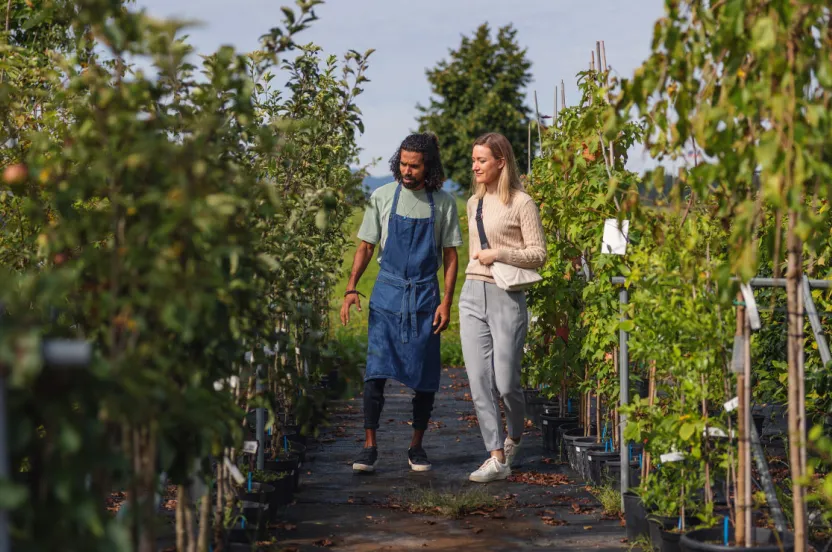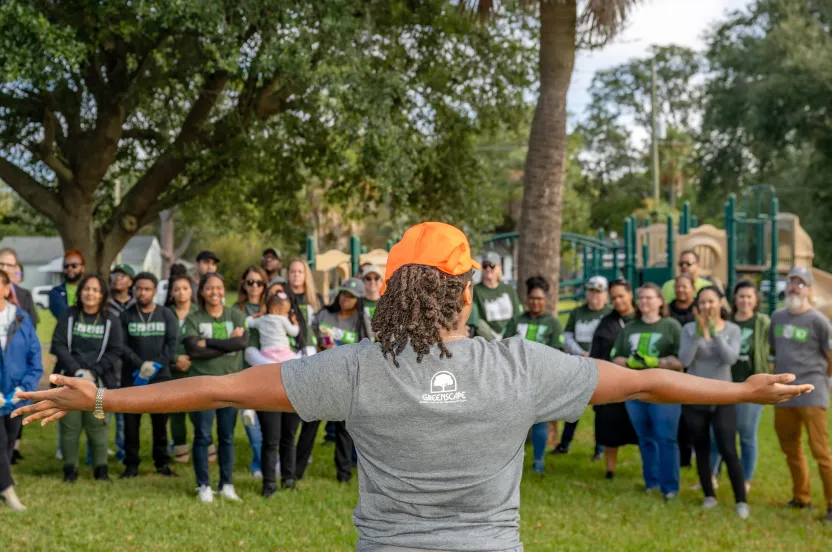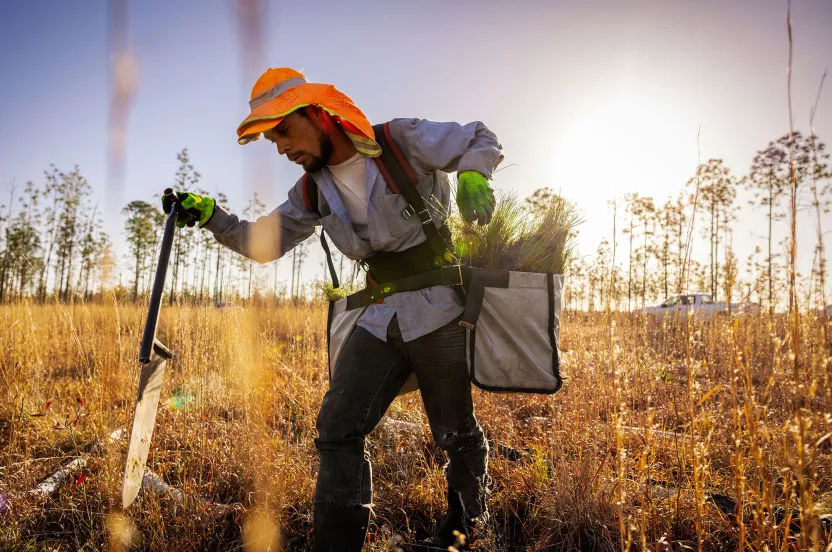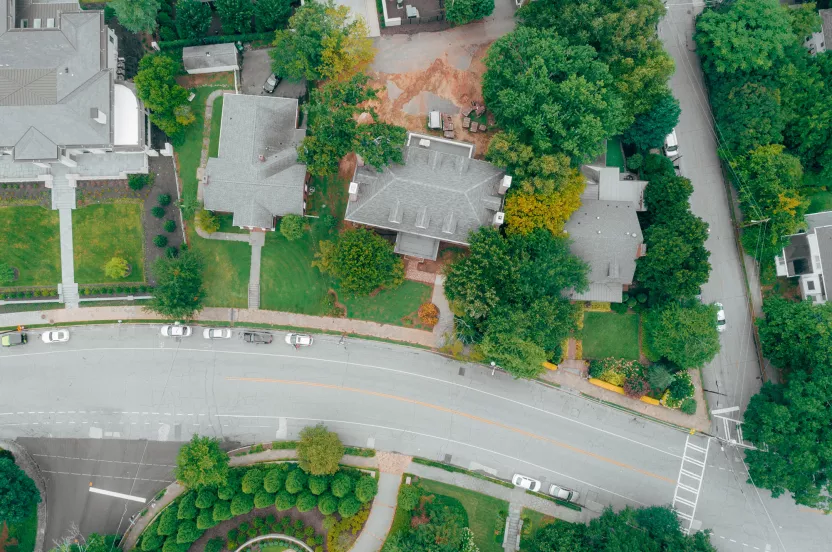Give before midnight on July 31 to double your impact where trees need us most. CHOOSE A PROJECT
Restoring the Heart of Puerto Rico
Combining nature and technology to replant the island in the wake of disaster.
August 28, 2023

“Service to all mankind” is one of the founding tenets of Alpha Kappa Alpha, the oldest and largest Black sorority in the United States.
Sixty years’ worth of natural treefall in one day. That was NASA’s estimation of the impact Hurricane Maria had on Puerto Rico’s forests.
This deadly storm hit mainland Puerto Rico in September of 2017 as a category 4 hurricane, carving a path of devastation across the island. Amid the death toll, lack of power, and destroyed infrastructure was also the astonishing loss of 30% of the island’s trees.
The typically lush landscape looked barren, almost alien, to local residents. It was just as unfamiliar for the wildlife. “The bees were going crazy looking for food. They didn’t have flowers; they didn’t have anywhere to go. So every place that you saw a can of soda, you saw seven bees there,” said Judy Galib, foundations and development coordinator with Para la Naturaleza. “The little birds, they didn’t know where to go. So you saw them in the street because they didn’t have the canopy. They didn’t have their nest.”
Local tree planting nonprofit Para la Naturaleza has a long-term commitment to help restore the land ravaged by Hurricane Maria. The goal is to plant 750,000 trees within seven years — a massive undertaking. With the scale of this project and the well-being of Puerto Rico’s biodiverse ecosystems at stake, the staff at Para la Naturaleza know they must replant the landscape in the right way. That’s why they’re combining a focus on native tree species with modern technology to ensure Puerto Rico can recover its tree canopy — and its identity.
Returning to the island's roots
When 155-mile-per-hour sustained winds whipped through Puerto Rico, the island felt Maria’s wrath. And because a significant portion of tree cover here wasn’t native, Para la Naturaleza says, the tree canopy suffered. Nonnative tree species brought into the country over the last century — for wood value, fruit, shade for coffee shrubs, or even ornamental purposes — weren’t equipped to weather severe tropical storms.
With optimal growing conditions (good soil, plenty of rain, and ample sunshine), trees thrive in Puerto Rico. Many of the nonnatives grow too quickly to develop dense wood. It’s an issue that you don’t see with native trees. “They grow slower, and they have better wood. They are more solid. They withstand a lot more wind,” said Ahmed Pérez Lugo, reforestation superintendent with Para la Naturaleza.
This difference in wood density meant the damage to nonnative species was greater than what was seen with native trees. Replanting efforts are focused on a tree canopy that can hold up better in hurricane-force winds.
Because the hurricanes will continue. And they have the potential to only get more frequent and more intense as climate change tightens its grip.
Native trees also support the natural biodiversity of the island. They’re the building blocks for Puerto Rico’s ecosystems, and the wildlife here rely on them for their survival. “Those are the trees that the butterflies use, that the coquí (a species of frog only found in Puerto Rico) use, that some reptiles use,” said Pérez Lugo. “It’s the correct way to do a recovery of the ecosystem.”
The trees planted in forests and mangroves are primarily native, as are most of those distributed to community members to plant in their yards. Some of these species include capá prieto (Spanish elm), kapok, cedro (Spanish cedar), guaraguao, malagueta, guava, and maga (whose blossom is the official flower of Puerto Rico). In November 2022, Para la Naturaleza distributed more than 28,000 trees to residents.
Getting trees in the hands of homeowners is critical to restoring the community tree canopy, and they are excited to get involved. “A lot of people [were] looking for native trees, trees that represent the island. So they have that connection with the tree and the island. It gives them a lot of pride to have those trees in their area,” said Giselle Arocho of Para la Naturaleza.
Smarter technology for greater success
The long-term health of these newly planted trees is key to the success of restoring the island’s environmental identity. That’s why each of Para la Naturaleza’s plantings includes five years of tree care and monitoring. While the care is done by hand, ongoing monitoring is managed with a drone. This technique is newer for the organization, and the technology is state-of-the-art. An infrared camera and advanced GPS mapping allow for detailed monitoring every month.
The most important marker they look for is survival. In the map created during the drone flyover, you can see blue dots, meaning a tree is growing there. By comparing these maps month to month, they can determine the survival rate of their plantings. The fewer blue dots they lose over time, the better their tree care plan is working. “For me, that’s the best indicator that the project was successful,” said Pérez Lugo.
All of this leads to improved results. Para la Naturaleza is seeing impressive tree survival rates — more than 80% compared with the 50% that they hear from other organizations. The higher survival rates are a direct result of this level of dedication to data collection and tree care.
An app was also created to further engage Puerto Ricans in the 750,000-tree goal. With this app, they can find information about more than 200 native trees, register the location of the trees they have planted, and even schedule tree care reminders. And a map of the island is populated with each tree that has been planted — by both homeowners and Para la Naturaleza.
Delivering this level of information and interactivity through people’s smartphones pulls them into the wider effort, empowering them to plant and nurture their trees. “When people plant trees, they have a sense that they’re doing something for the island,” said Galib.
Para la Naturaleza is deeply committed to replanting Puerto Rico’s landscape the right way. The combination of science, nature, and technology means a healthy tree canopy that’s ready to weather the next storm.
But more than that, their commitment means an important part of the island’s identity — and of people’s lives — is already growing back.



